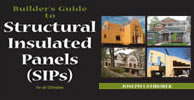| BENEFIT | 2×6 R19 | SIPS |
|---|---|---|
| Energy Efficiency | Baseline | Up to 58% more efficient |
| Fire Resistance | Sticks require one layer of 5/8” drywall to meet an hourly wall. | One hour firewall is achieved with 1 layer of 16mm Fyreline Jib for Type “L” panels or 2 layers of 16mm Fyreline Type “X” drywall for Type “S” panels. |
| R-Value | The whole wall R-value data of a 4.5” SIPS wall rated at R-2.29 out performed a 140×45 wall with R-19 fiberglass insulation. | Premier SIPS offer a 20 year R-Value warranty : 4” SIP = R2.29 6” SIP = R4.05 8” SIP = R5.28 10” SIP = R6.52 12” SIP = R7.92 |
| Strength | Baseline | 20-30% stronger. The natural characteristics of SIPS are similar to that of a steel I-Beam. The OSB skins act as the flange of the I-beam, while the rigid foam provides the web. This gives SIPS an advantage at handling in plane compressive loads, that can be engineered for most applications. View load charts. |
| Seismic and/or Wind | Yes, tie downs and additional material/ labor costs required. | Yes, tie downs and additional material/ labor costs required. |
| Waste Created | Baseline | 30% less salvageable structural lumber sent to the landfills over stick, Premier SIPS are also recyclable. |
| Labor Costs | Baseline | Up to 55% labor savings. |
| IAQ – Indoor Air Quality | Baseline | The tightness of a SIPS envelope prevents air (carrying outside pollutants and allergens) from gaining access to the interior of the home except in controlled amounts, creating a healthy and comfortable indoor environment. Humidity can be controlled more easily in a SIP building resulting in more comfort and an environment less prone to mold growth and dust mites. |





